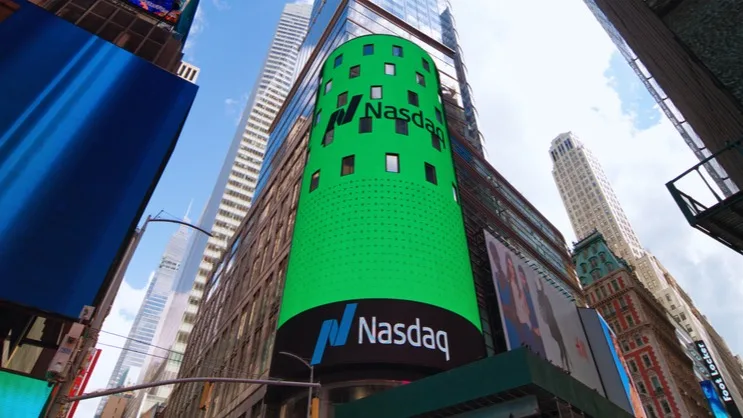
Overview
Despite a historic slump in biotech IPOs and venture funding, three women-led exits break through in a tough 2025.
For the first time in 15 years, no biotech company went public in the last quarter, and among public companies, a significant number are running dangerously low on cash, according to analyst reports. The lone bright spots: A trio of billion-dollar buyouts of women-led companies.
The bleak economic assessment comes from an investor survey and mid-year report by banking firm William Blair, which noted the lack of any IPOs in the second quarter was the first time that’s happened since the 2010 financial crisis.
The firm also reported more than a third of public biotechs now have less than a year of cash left. Meanwhile, early-stage startups are facing shrinking deal sizes, reluctant investors and growing pressure to cut costs or seek a buyer.
“Financing activity was subdued, down 53 percent year-over-year, as investor confidence continues to be dampened by FDA regulatory uncertainty, drug pricing pressures, limited IPO visibility, and persistent macroeconomic and geopolitical volatility,” William Blair wrote in their mid-year report. “Investors remain interested in follow-on opportunities in both the private and public markets but are currently apprehensive about IPOs.”
Nearly two-thirds of this year’s private financings have gone to companies with drugs already in human trials, up from just over half last year. Earlier-stage companies, especially those in preclinical phases, are struggling to generate any interest, William Blair said.
$24 Billion in Mergers and Acquisitions
Still, one part of the market is showing signs of life: mergers and acquisitions. Thirteen biopharma deals worth a combined $24 billion were announced in the second quarter, according to William Blair. Among the top deals were Abbvie’s $2.1 billion acquisition of Capstan last month; Sanofi’s $9.5 billion acquisition of Blueprint Medicines in early June; and Johnson and Johnson’s $14.6 billion acquisition of Intra Cellular in April.
All three of the acquired companies are led by women CEOs, notable in an industry where fewer than one in 10 biotechs have female leaders.
Each of the three companies offered something different. Blueprint, led by Kate Haviland, brought to the deal both marketed and investigational therapies, with a focus on rare immunological disease therapies. Capstan, under CEO Laura Shawver, PhD, was working on in vivo CAR-T treatments and had early-stage clinical data. Intra-Cellular, helmed by Sharon Mates, PhD, focused on neurological conditions and had already launched a commercial drug for adults with bipolar I and bipolar II depression.
Overall equity financing in the first half of the year fell by more than 50 percent compared to 2024. That includes IPOs, private rounds, and public follow-on offerings. Life sciences venture funds also slowed their pace, raising just $1.8 billion in new capital in the second quarter—down a third from the previous quarter.
Killing Zombie Biotechs
Many biotech companies that still have cash but little prospects for scientific or commercial success are choosing to shut down and give money back to investors instead of hanging on as “zombie” companies. Instead of trying to weather years waiting for a buyer or hopes that a drug program will show results that attract new investors, more of these companies are being sold or returning cash directly. William Blair says this has become the most common path after companies review their options.
Other companies in less dire situations are trimming budgets to extend their lifelines. William Blair identified more than 30 small and mid-cap biotechs that announced cost-cutting or restructuring plans. Layoff announcements during the first half of the year jumped 32 percent over the prior year with 128, according to the FierceBiotech layoff tracker. Biospace, which also tracks layoffs, found that more than 11,000 workers lost their jobs during the first half of the year, or around a 10 percent increase over the same period a year earlier.
Still, not all companies trading below their cash value are out of options. William Blair analyzed 186 biotechs that had negative enterprise value in mid-2022 (meaning they were worth less than the cash they held on their books) and found that about 30 percent have since rebounded. Some, like Rhythm Pharmaceuticals, Scholar Rock and 89bio, added more than $1 billion in market value through clinical success or mergers and acquisitions.
Broader Market Remains Upbeat
Market trends outside of biotech appear more upbeat. In its July outlook, investment firm Stifel said the S&P 500 had already passed its full-year target, reflecting strong earnings and hopes for upcoming interest rate cuts.
Still, Stifel cautioned that risks remain. Tariffs, war in the Middle East and Europe, and erratic U.S. policy decisions could lead to more market swings—and make it harder for biotech and other capital-intensive sectors to attract investment.
“Unpredictable policy shifts have complicated economic and market forecasting,” wrote Stifel’s chief investment officer, Michael O’Keeffe.
The Barrel is Empty
Back in biotech, many entrepreneurs are still waiting for the window for IPOs to reopen. Until then, companies are being urged to conserve cash, focus on hitting milestones, and keep mergers and acquisitions or partnerships on the table.
“The barrel’s empty — and so is the pipeline,” said William Blair. “Expectations for a broad biopharma recovery in 2025 have tempered as macroeconomic and regulatory headwinds persist.”
Read The Future of Healthcare Innovation 2025 for more opinions, concerns, and strategies of leading entrepreneurs, investors, academics, and government stakeholders.








